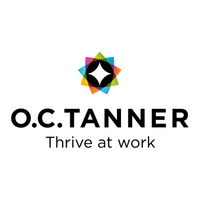What does the perfect recognition programme look like?

Start with purpose
Link your recognition programme to your company purpose and values so that there’s a clear understanding of why someone is being recognised. Always make it clear which organisational value/s the person has demonstrated, whether it’s innovation or excellent customer service, for example. And by connecting every accomplishment to the bigger picture, this reinforces what the company stands for and is trying to achieve.
Enable everyone to recognise
Ensure the recognition programme is inclusive, allowing leaders to recognise their employees, employees to recognise their leaders and colleagues to recognise each other. Everyone should be recognised equally, regardless of level, function, area or location. And of course, don’t forget remote/hybrid employees and frontline workers, whose work may be less visible to those in the office. Everyone must have the opportunity to show recognition 24/7 via mobile devices as well as office computers. And by building a single central, global programme that all employees can use to give and receive recognition, this ensures a consistent experience.
Put recognition into the flow of work
When employees don’t need to leave their flow of work, there’s a far higher chance of them giving and receiving recognition. This makes it vital to embed recognition software into the tools employees use every single day albeit Outlook, Salesforce or Slack, for example.
Consider recognition awards carefully
A gift voucher has its place, but it shouldn’t be the ‘catch all’ award for all. It may be the ideal thank you for an employee working overtime, but would fall short if the employee had just saved the company thousands by developing a new, efficient process. The achievement must be matched to the right award and it must be culturally relevant (some nationalities preferring certain awards over others). Also, don’t underestimate the power of personalised, symbolic awards for recognising milestones and career celebrations.
Focus on the experience as much as the award
When recognising individuals for going above and beyond, great results and career celebrations, it’s important to make the moment special and highly personal. It should be focused on creating memories and this means encouraging leaders and teams to present recognition both publicly and one-on-one, depending on circumstances. Recognition must be given sincerely and in a timely way, while making it clear what the individual has accomplished and how this ties-in with the organisational purpose. If giving recognition to remote workers, consider how to make the moment just as special from a distance, perhaps with a virtual ceremony in which leaders and colleagues are invited to share stories and anecdotes.
Don’t let it be a ‘HR initiative’
Recognition must become integrated into everyday culture. This means gaining the support of senior leaders. After all, they need to be role models, giving and receiving recognition regularly. Without leaders championing recognition, it will be harder for a programme to meet with success.
HR and reward professionals need to be prepared to give presentations to executives about the return on investment (ROI) of recognition, why it’s so important for the business and how it needs to be rolled-out. By taking the time to educate leaders and gain their consensus, this will create a solid foundation for any future recognition initiative.
Connect employees to the what, how and why of recognition
Early on, it’s important that employees have a good understanding of the what, how and why of recognition. What is it? How does it work and how does it impact me? And why is it important?
To ensure deep understanding, a comprehensive communication and training plan will be needed that reminds employees to show appreciation frequently, and helps managers to understand why recognition matters.
Calculate return on investment
Success is more than just calculating the number of people using the recognition platform. It’s important to consider three levels of measurement: usage metrics (how often employees are giving and receiving recognition and who they are); culture measures (how recognition is impacting engagement, perceptions about leadership, and company culture); and business results (how recognition is improving retention, customer satisfaction, sales, quality metrics, etc). Be clear from the start what you plan to measure and report on the results to provide accountability.
Don’t let the recognition programme go stale
Don’t see recognition as something you can tick off and move on from. It must be constantly monitored and refreshed so that it doesn’t get stale. By keeping it top of mind and reviewing it regularly, recognition will become part of the organisation’s DNA.
Plan it and go for it!
If rolling-out a recognition programme is something you’ve been putting off, it’s time to move it to the top of your list. After almost two years of lockdowns, remote working, stress and anxiety, more than ever employees need to feel appreciated, valued and a sense of belonging. Recognition can deliver all this and more, making it a powerful business tool when implemented correctly.
The author is Robert Ordever, managing director at O.C. Tanner Europe.
This article is provided by O.C. Tanner Europe.
Supplied by REBA Associate Member, O. C. Tanner
Giving teams the integrated tools they need when, where and how they need them.







